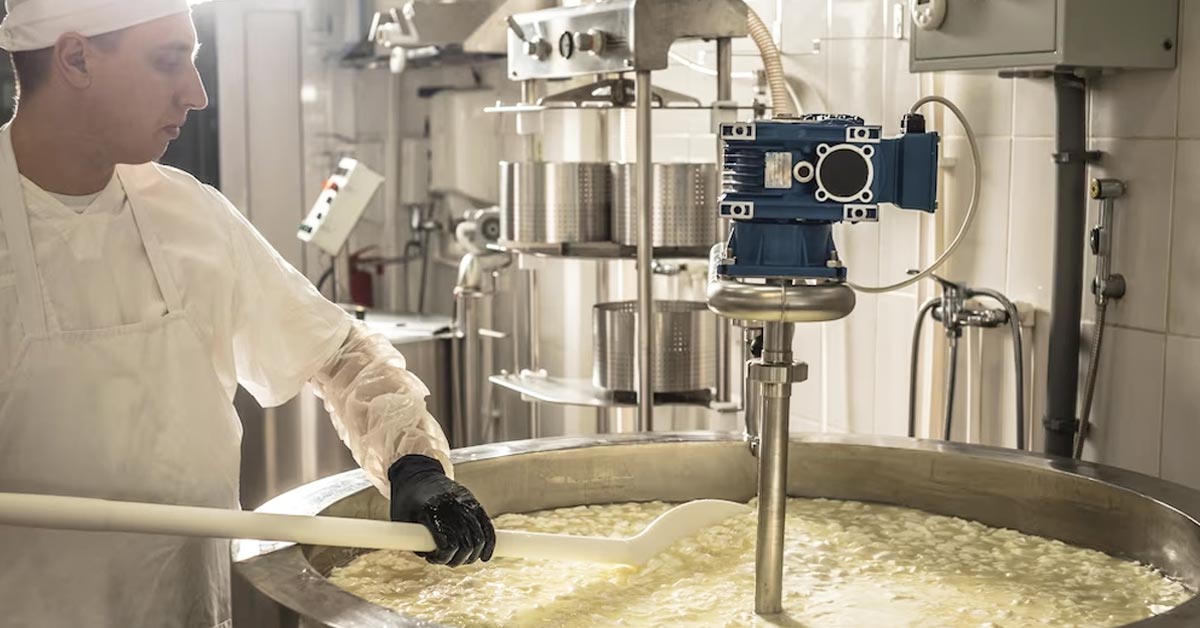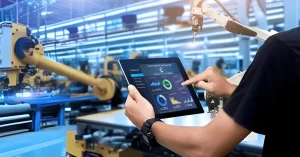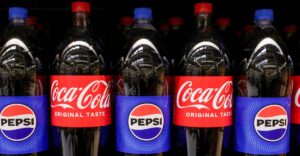Ever spread a dollop of butter on warm toast and wondered how that creamy goodness came to be? Believe it or not, the butter you enjoy today has a rich history, and it’s not just about cows and cream. It’s about the incredible evolution of butter churn machines – from hand-cranked devices that were a staple in grandma’s kitchen to the colossal industrial machines that produce butter by the ton today. Intrigued? Stick around as we churn through the fascinating journey of butter-making technology.
The Humble Beginnings: Hand-Cranked Churns
1. The Labor of Love
You might find it hard to believe, but there was a time when making butter was a community event. Picture this: families gathering around a hand-cranked churn, taking turns to operate it. It was labor-intensive, sure, but it was also a social affair that brought people together.
2. The Mechanics
These early churns were simple but effective. A wooden barrel, a crank, and some good old elbow grease were all you needed. The crank would stir the cream, slowly but surely turning it into butter. No electricity, no automation – just pure human effort.
3. The Quality Factor
Because of the slow churning and human touch, the butter produced was often of exceptional quality. The texture was rich, and the flavor was robust. Many artisanal producers today still swear by these traditional methods for that very reason.
4. The Cultural Significance
Hand-cranking wasn’t just about making butter; it was a cultural ritual. It was a skill passed down through generations, often accompanied by songs, stories, and a sense of communal achievement.
So, the next time you spread that butter on your toast, take a moment to appreciate the labor of love that went into its early forms. But as you’ll see, the world of butter-making didn’t stop turning there—it evolved, just like everything else.
The Transition Era: Introduction of Mechanized Butter Churn Machines
1. The Need for Speed
As populations grew and the demand for butter soared, it became clear that the hand-cranked method wasn’t going to cut it anymore. Enter the mechanized butter churn machines. These were game-changers, allowing for faster and more efficient butter production without sacrificing too much of that homemade quality.
2. Early Innovations
The first mechanized butter churn machines were not as high-tech as you might imagine. They were often powered by simple engines or even animal labor. However, the introduction of gears and more complex mechanisms meant that a lot more butter could be produced in a lot less time.
3. Impact on Local Economies
These mechanized churn machines were more than just time-savers; they were economy boosters. Dairy farmers could now produce butter on a larger scale, opening up new markets and opportunities for trade.
4. Quality vs. Quantity
While mechanized churn machines were efficient, there was a debate about the quality of the butter they produced. Could a machine replicate the texture and flavor of hand-churned butter? This became a point of contention, but as technology improved, so did the quality of machine-churned butter.
5. The Shift to Factories
As these machines became more advanced, they started to move from individual homes to factories. This was the beginning of industrial butter production, setting the stage for the colossal churn machines we see today.
The Rise of Industrial Butter Production: The Age of Giants
1. The Industrial Revolution’s Impact
Industrialization ushered in machines that transformed butter churning from a manual to a mechanized process. This shift wasn’t just about bigger machinery but also an increased capacity for production. In the US, butter production figures have soared over the years, with about 2.06 billion pounds of butter churned out in 2022 alone.
2. The Modern Giants
Today’s industrial butter churn machines are colossal, capable of handling thousands of gallons of cream. These aren’t your grandma’s churns; they’re sophisticated pieces of engineering with computerized controls, temperature regulation, and automated processes.
3. Efficiency and Scale
Industrial churn machines epitomize efficiency, churning out copious quantities of butter to meet the escalating global appetite for this dairy staple. Leading the pack in butter production in 2022 was India, with over six million metric tons, showcasing the remarkable scale of modern-day butter production.
4. Quality Control
You might wonder if making butter on such a large scale compromises its quality. The good news is that modern technology allows for incredibly precise control over the churning process. This ensures that the butter produced meets strict quality standards, whether it’s destined for your local grocery store or an international market.
5. The Environmental Angle
These machines are not just efficient; they’re also increasingly eco-friendly. With a growing focus on sustainability, many manufacturers are designing their butter churn machines to be energy-efficient and to minimize waste.
The Future: What’s Next for Butter Churn Machines?
1. Technological Innovations
As we look to the future, we can expect even more advancements in butter churn machine technology. Think AI-powered systems that can adapt the churning process in real-time or IoT-enabled machines that can be remotely monitored for optimal performance.
2. Customization and Niche Markets
As consumers become more discerning, there’s a growing market for specialty butters—organic, flavored, you name it. Future churn machines will likely offer more customization options to cater to these niche markets.
3. Sustainability
The push for more sustainable food production methods will continue to influence the design and operation of industrial churn machines. This could mean anything from solar-powered factories to churn machines that recycle their own waste.
Conclusion
From the hand-cranked churns that were once the heart of community gatherings to the industrial behemoths that fill our supermarkets with creamy goodness, the evolution of butter churn machines is a fascinating tale of innovation, scale, and adaptability. And the story isn’t over; with advancements in technology and a growing focus on sustainability, who knows what the future holds for these incredible machines?
ⓘ As part of our ongoing support for startups and SMEs, LAFFAZ Media publishes feature and resource articles that may include references and links to external websites. These inclusions are selected at our editorial discretion to provide valuable information to our readers. LAFFAZ Media does not control, endorse, or assume responsibility for the content or practices of external websites. For more details, please refer to our Terms and Conditions.





